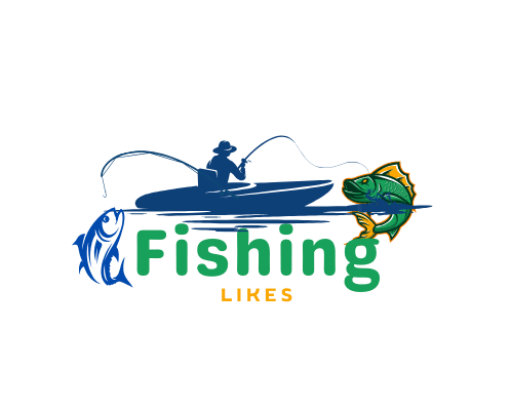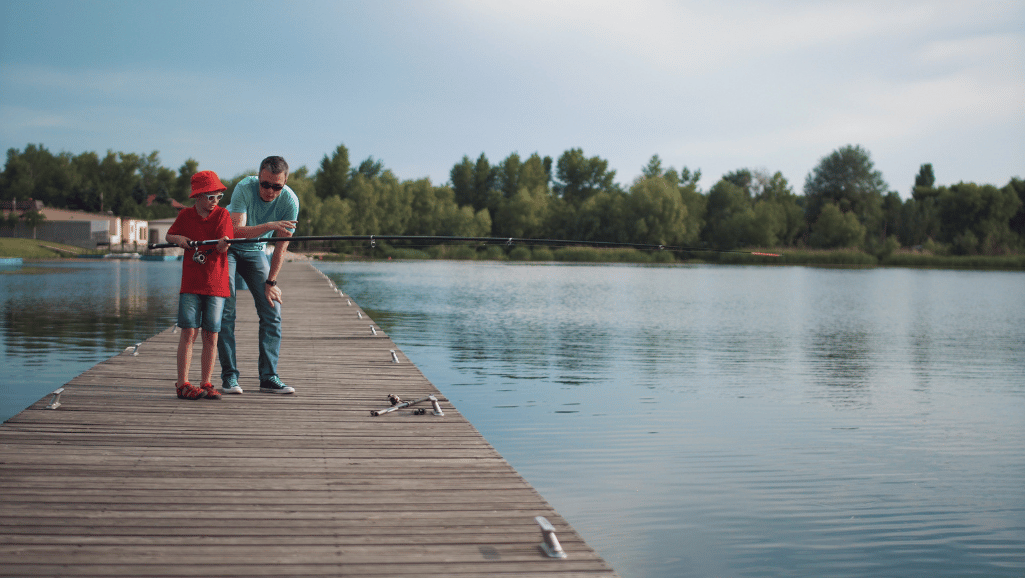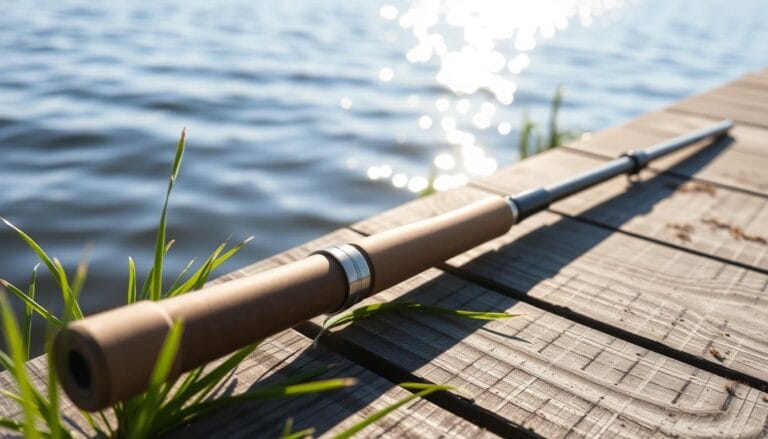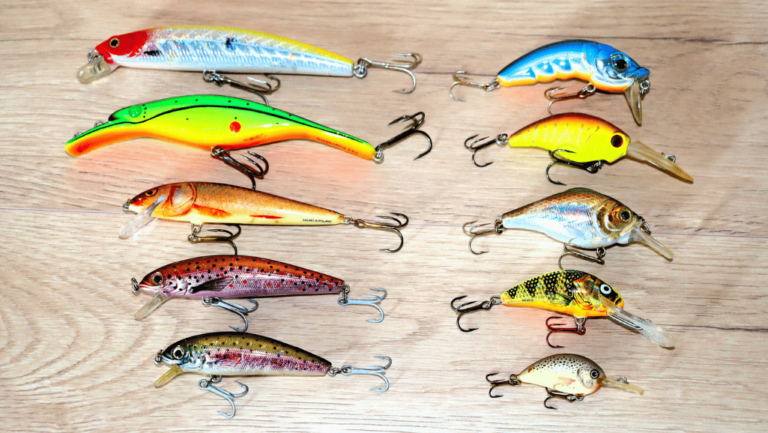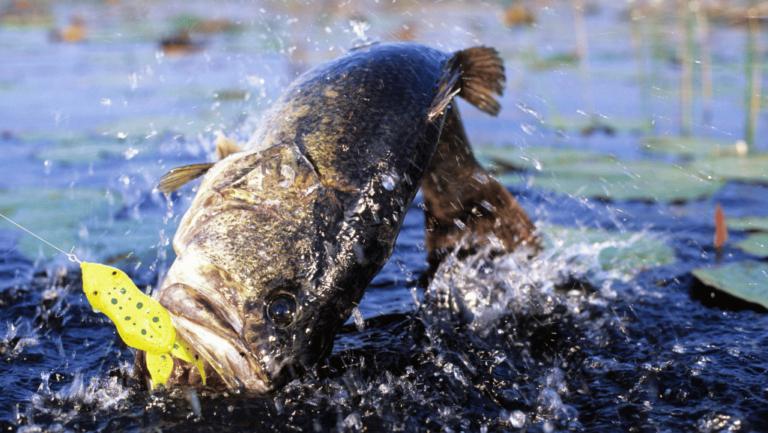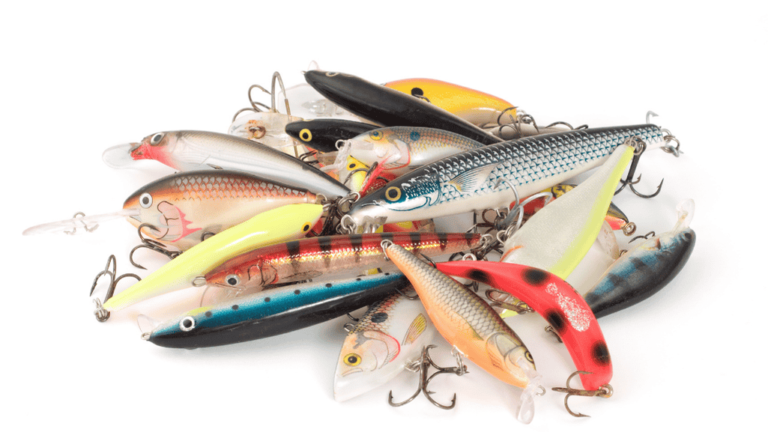Fishing enthusiasts looking to master lake fishing must explore the underwater world. Whether you want a trophy largemouth bass or colorful bluegill, knowing how to find fish in a lake is key. Each lake is a world full of life, with fishing methods changing with the lake type. This guide will help both fishing tips for beginners and experts improve their skills with lake fishing techniques.
Key Takeaways
- Learn the differences between natural and man-made lakes for better fishing.
- Find out where fish like to live by understanding their habitats.
- Use plants and underwater features to increase your chances of catching fish.
- For man-made lakes, focus on drop-offs and ledges to catch bass.
- Use technology like online maps and thermometers to find the best fishing spots.
- Check salinity, oxygen levels, and depth to find where fish are likely to be.
- Improve your fishing by considering food sources, underwater structures, and fish behavior.
Understanding Lake Types: Natural vs Man-Made
Knowing the difference between natural vs man-made lakes is key for anglers. These differences affect the lakes’ ecosystems and how you fish. It’s vital for success in freshwater fishing.
Characteristics of Natural Lakes and How They Affect Fishing
Natural lakes come from geological events like glaciers or volcanoes. They are usually clear and have complex underwater features like trees and steep drop-offs. These features help in locating bass in a lake. To find fish, look for areas rich in natural food.
Adapting Your Approach to Man-Made Lake Environments
Man-made lakes, created by damming rivers, have controlled environments but changing water levels. These affect fish behavior. To fish here, focus on structures like docks and dam walls.
Identifying Fish Habitats in Different Lake Structures
Identifying where fish live is key in both natural and man-made lakes. Man-made lakes need special tactics due to their depth and murky waters. Lake fishing tips like using sonars help here. Natural lakes let you see where fish might be hiding.
| Lake Type | Common Characteristics | Key Fishing Tips |
|---|---|---|
| Natural Lakes | Clear water, abundant vegetation, complex bottom structures | Target areas with natural food sources and cover |
| Man-Made Lakes | Fluctuating levels, clearer banks, less natural cover | Focus on engineered structures and deeper waters |
Understanding natural vs man-made lakes and using the right lake fishing tips improves your fishing. It also deepens your knowledge of different water environments.
Essential Tactics for Locating Lake Fish
Finding the best fishing spots in a lake means knowing how fish act and using the right techniques for locating fish. Finding fish using sonar is a top tool for anglers. Sonar gives real-time views of the underwater world, showing where fish are, their depth, and the lake’s bottom.
Lakes like Grafham stock over 30,000 fish each season, making them great for fishing. To catch more, it’s key to know how fish react to changes in their environment. For example, fish move deeper when the water gets colder by 2 to 3 degrees. So, knowing about depth in reservoir fishing can really help your fishing.
Also, where you put your bait can greatly increase your chances of catching fish. Using bait that matches the size of the fish’s natural prey can boost catch rates by 70%. Fishing during certain Moon phases can also improve your chances, with the best days being 80% more likely to be successful.
- Use light rods with AFTMs of #3 – 5 for more effective bank fishing in reservoirs.
- Cast near structures or changes in bottom contours where fish like to congregate.
- Fish at the correct depth, especially in the early season when fish are deeper.
For traditional fishing, knowing where to fish is as important as how you fish. Points in reservoirs are key spots because they funnel food and offer access to different depths and temperatures. These spots are among the best fishing spots in a lake.
| Fishing Factor | Influence on Fishing Success |
|---|---|
| Water level changes | Affects depth and temperature, pushing fish deeper or into new areas |
| Visibility and water clarity | High visibility allows more flexibility in fishing methods |
| Tackle adjustment | Matching the tackle to species increases success by 75% |
Click on this guide to learn more about fish insights and how they help in fishing.
Lake Fishing Strategies: Vegetation and Structures
For those who love improving their lake fishing techniques, knowing how vegetation and structures help is key. These elements make lakes look beautiful and help you find fish better.
Significance of Vegetation in Natural Lakes
In natural lakes, plants are vital for fish. They give food, oxygen, and shelter. Using weedless spoons can help you catch fish like northern pike without getting tangled.
How Structures Offer Prime Fish Habitats in Lakes
Things like logs and rock piles are great for fish. They also help anglers fish in areas with little plants. Using strong leaders helps you move through rough spots better.
Effective Techniques for Fishing Around Lake Vegetation
Fishing near lake plants requires knowing where fish live and how to get to them without harming their home. You need to cast and retrieve carefully to avoid getting stuck and catch more fish.
| Structure Type | Characteristics | Benefits for Fishing |
|---|---|---|
| Weed Beds | Located in water less than 15 feet deep | High oxygen levels and abundant food sources attract various fish |
| Rock Reefs | Submerged structures providing cover | Offer protection for fish, ideal spots for angling |
| Underwater Logs | Fallen trees that create natural hiding spots | Excellent for species that prefer enclosed spaces |
| Point Bars | Shallow to deep water transitions | Guide fish from deep to shallow areas, perfect for season transitions |
Building a fish-friendly lake needs knowledge of its biology and physical features. For tips on making a lake good for fish, check out fish-friendly lake design.
How to Find Fish in a Lake Using Modern Technology
Modern fishing technology has changed how we find fish in lakes. Fish finder tools and fishing sonar equipment give anglers unmatched accuracy in understanding the underwater world. These devices are key to best fish finder techniques and fish locator methods.
Using side-imaging technology, anglers can see detailed views of underwater habitats. This helps them find the best fishing spots. By combining these new tools with traditional skills, fishing becomes more efficient.
For example, setting the depth to 20 feet is good for finding bass in summer. But, adjust this based on water temperature and fish behavior. Down and side imaging show the size and type of bass, helping anglers know what they’re dealing with. Tools like mapping and sonar scanning before fishing increase the chances of a successful catch.
| Feature | Ideal Speed (mph) | Usage |
|---|---|---|
| Standard 2D Sonar | Up to 30 | General underwater mapping |
| Down Imaging | 1-4 | Detailed view of the lakebed |
| Side Imaging | 1-4 | Wide view of underwater structures |
| Live Sonar | Less than 7 | Real-time fish tracking |
| 360 Imaging | Less than 1 | Complete surround scanning |
With these advanced fish finders, picking the right bait is crucial. For example, if bass are found on the bottom, crankbaits and jigs work well. Using tools like Google Earth for scouting spots shows how digital mapping helps in fishing, making it more effective.
Unlocking the Secrets of Water Temperature and Fish Behavior
Knowing how water temperature affects fishing is key. It helps in finding fish and knowing the best fishing times. Fish act differently with temperature changes, making some times better for fishing.
Water Temperature’s Impact on Fish Location
Each fish type likes a certain temperature, which affects where they live in a lake. Trout prefer cooler water, often found in deep or shaded spots in the summer. Bass, on the other hand, go to warmer shallows to hunt.
This means anglers must change their fishing plans with the temperature. They need to adjust as the day and seasons change.
Optimal Conditions for Targeting Specific Lake Species
Knowing when to fish based on temperature can really help your fishing. Early morning or late evening are usually best because the air is cooler. Fish are more active and easy to catch then.
In summer, fish seek cooler, deeper water during the day. This means you need to use deeper lures or weighted lines.
Understanding fish behavior and temperature can make fishing better. By adapting to the conditions and using the right strategies, anglers can catch more fish in different lakes.
Top Bait Selection for Successful Lake Fishing
Choosing the best bait for lake fishing is key for anglers wanting big catches. It’s important to know how bait selection for lake fishing can make your fishing trips better. This knowledge can turn a regular fishing day into a great one.
Largemouth bass love both live baits and artificial lures. Soft-plastic worms, jerkbaits, and best lures for lake fishing like crankbaits work well. They look and move like real prey, making bass can’t resist them.
Crappie fishing does well with minnows or jigs. The right bait changes with the season and water conditions. In early season, a 1- or 2-inch minnow or a small jig works great. This is when white and black crappies are active during their spawn.
For bluegills, live baits like crickets and red worms are top choices. They look and smell like real food to bluegills. Use these from May to October, when they’re most active in shallow, green waters.
Choosing the right fishing gear for lake fishing is also crucial. The right hooks, weights, and lines can help you catch more fish. For clear water, use a light line to avoid scaring fish. But, use strong gear in areas with lots of plants or underwater stuff.
In conclusion, picking the right bait and gear for the situation and fish you’re after will help you catch more. Whether you use live bait or artificial lures, knowing what your fish likes is key to fishing well on a lake.
The Art of Shore Fishing: Where and When to Fish
Shore fishing is a great way for anglers to enjoy fishing without needing a boat. It’s perfect for both beginners and experts. Everyone can try different fishing methods, making it accessible and challenging.
Strategic Locations for Shore Fishing in Lakes
Finding the best spots for shore fishing means knowing where fish like to hang out. Look for jetties, spillways, and riprap because fish hide and chase bait there. These spots break the current and offer shelter. Tactical shoreline fishing here is very effective, especially during the shad spawn or when it’s cold.
Using digital tools can make planning your fishing trip better. Sites like Google Earth help you find these spots easily.
Importance of Timing: Best Periods for Shore Fishing Success
Timing is key for shore fishing. Fishing during season changes, at dawn, or dusk can really up your catch. Fish move closer to shore in low light, making them easier to catch.
Checking generation schedules at spillways can tell you the best times to fish. This helps you fish when fish are most active. Using these timing tips can greatly improve your shore fishing.
Analyzing Shore Fishing Zones: Knowing where and when to fish can really boost your success. Here’s a guide to typical shore fishing spots and what makes them good. This will help you make better decisions.
| Location Type | Features | Seasonal Benefit | Bait Recommendation |
|---|---|---|---|
| Spillways | Public access, Fish concentration | Year-round, peak during water release | Stickbaits, Plastic worms |
| Jetties | Structure, Deep water access | Colder times, Shad spawn period | Wacky rigs, Crankbaits |
| Rip Rap | Rock structures, Current breaks | Spring to Fall transitions | Spinnerbaits, Jerkbaits |
| Marinas | High fish traffic due to tournaments | Post-tournament periods | Weightless plastics |
For better shore fishing, try these structured methods and plan your timing well. With the right techniques for fishing in lakes, shore anglers can catch a lot of fish. This makes for a great day by the water.
Maximizing Your Catch: Seasonal and Weather Considerations
Knowing when and how fish move can greatly improve your fishing strategy for lakes. Spring and fall are best for fishing in shallower waters. Fish are more active in these seasons, making them easier to catch.
Weather also affects fish in fishing in freshwater lakes. Warm water makes fish more active. But, cold weather slows them down, making them less likely to bite.
Barometric pressure also changes fish behavior. Just before a storm, fish get active and feed more. But, when pressure goes up, they slow down and hide deep, needing a different fishing strategy for lakes.
For topwater fishing in lakes, watch the wind’s impact on fish. Wind stirs up the water, making it easier for big fish to find food. Knowing how wind moves the water can help you find the best fishing spots.
| Weather Change | Impact on Fish Behavior | Recommended Strategy |
|---|---|---|
| Cold Front | Fish become less aggressive | Slow-moving presentations and structure fishing |
| Warm Spells | Increased fish activity at shallower depths | Use vibrant and lively lures to mimic active prey |
| Stable High Pressure | Fish are deeper, less active | Dead sticking baits |
| Rainfall | Stimulates feeding behavior | Target inflows and areas with runoff |
Adjusting to changing weather and lake temperatures can really help your fishing. For more tips, check out this comprehensive fishing guide. It also talks about choosing the right gear and understanding local fish for better fishing in freshwater lakes.
Adapting to changes in the environment is key to fishing in freshwater lakes. By knowing how weather and seasons affect fish, you can improve your fishing. This makes every trip more fun and successful.
Utilizing Sonar Technology: Finding Fish Underwater in a Lake
Using modern tech like sonar can really change the game for lake fishing. Sonar systems, including fish finders and high-definition scanners, have changed how we see underwater. They help us find fish better.
With the best fish finder techniques, anglers can see fish on their screens. These devices use frequencies to show fish as marks. This helps anglers know where fish are and where to fish better. Learning to tell apart baitfish marks from other fish is key to catching more.
Navigating Sonar Readings for Precise Fishing Locations
Modern sonar lets fishers see the underwater world clearly. For example, down and side scan sonar show detailed views of the bottom and sides of the lake. This helps anglers find good spots for fishing.
- Down scan sonar shows what’s below a boat, helping anglers spot fish as they go by.
- Side scan sonar gives a wide view from side to side, great for finding fish near underwater features.
- Portable sonar is great for anglers who move around, offering detailed views without being bulky.
Combining Traditional Angling Skills with Fish Finder Insights
Even with modern tech, old-school fishing skills are still key. Knowing how fish behave, what the water is like, and where fish like to eat is crucial. Using this knowledge with sonar can help find the best fishing spots.
| Technique | Application | Benefits |
|---|---|---|
| Reading sonar screens | Locating fish marks and interpreting their sizes | Improves target accuracy |
| Adjusting sensitivity settings | Enhances the differentiation between fish types | Better species selection |
| Utilizing zoom functions | Focusing on specific depths or areas | Targets preferred fish zones |
Adding fish finder technology to traditional fishing methods makes fishing better and more fun. As fishing evolves, knowing how to use new tech with old skills is crucial for success.
Pro Tips: Observing Fish Patterns and Natural Indicators
Expert anglers know how key it is to watch fish in their natural setting. This helps in spotting fish and understanding their movements, especially before they spawn. By watching the surface and underwater, you can find fish and boost your chances of catching them.
Learning to Read the Water for Natural Fish Cues
Looking at the water’s surface can show where fish might be hiding. These signs are crucial for anglers to know where fish live and what they eat. Tools like LakeMaster maps help find fish by showing where they like to be. Using sonar and traditional watching together gives a full view of fish behavior.
How to Spot Feeding and Pre-Spawn Activities in Lakes
Before they spawn, fish often feed a lot and move to shallower water. Knowing this can help with fishing during this time. Look for signs of spawning, like changes in temperature and the moon’s effect on fish.
| Lake Name | Notable Feature | Common Fish Behavior |
|---|---|---|
| Ridgeway Reservoir | Deep waters with clear visibility | Frequent deep-water feeding |
| Lake Granby | Large bays and inlets | Pre-spawn migration to shallows |
| Cheesman Reservoir | Rocky structures | Spawning near rocks |
| Blue Mesa Reservoir | Varied depth and structure | Mixed feeding patterns |
Using both watching and technology helps anglers get better at fishing. Learning from each trip makes fishing skills and success grow. It’s all about understanding fish and their ways.
Conclusion
The quest to catch more fish in lakes combines skill, knowledge, and technology. Knowing the differences between natural and man-made lakes helps anglers. Using fishing techniques that match the water’s temperature and structure is key to success. It’s crucial for both new and experienced fishers to know the best spots for fishing.
Learning from Lindner Media Productions’ Formula of Fishing Success and understanding fish behavior can help. Tools like fish finders and GPS are now essential for finding where fish gather. As fishing gets more competitive, staying up-to-date with new lures and techniques is crucial. By combining knowledge of fish habits with advanced gear and a careful plan, anglers can catch more fish with less effort.
Important factors like where fish live, what they eat, and how they reproduce affect fishing. For example, smallmouth bass prefer rock bars and shelves, while muskellunge like shallow bays. Success in fishing comes from knowing these facts and using technology wisely. The best anglers blend old knowledge with new technology while respecting nature.
